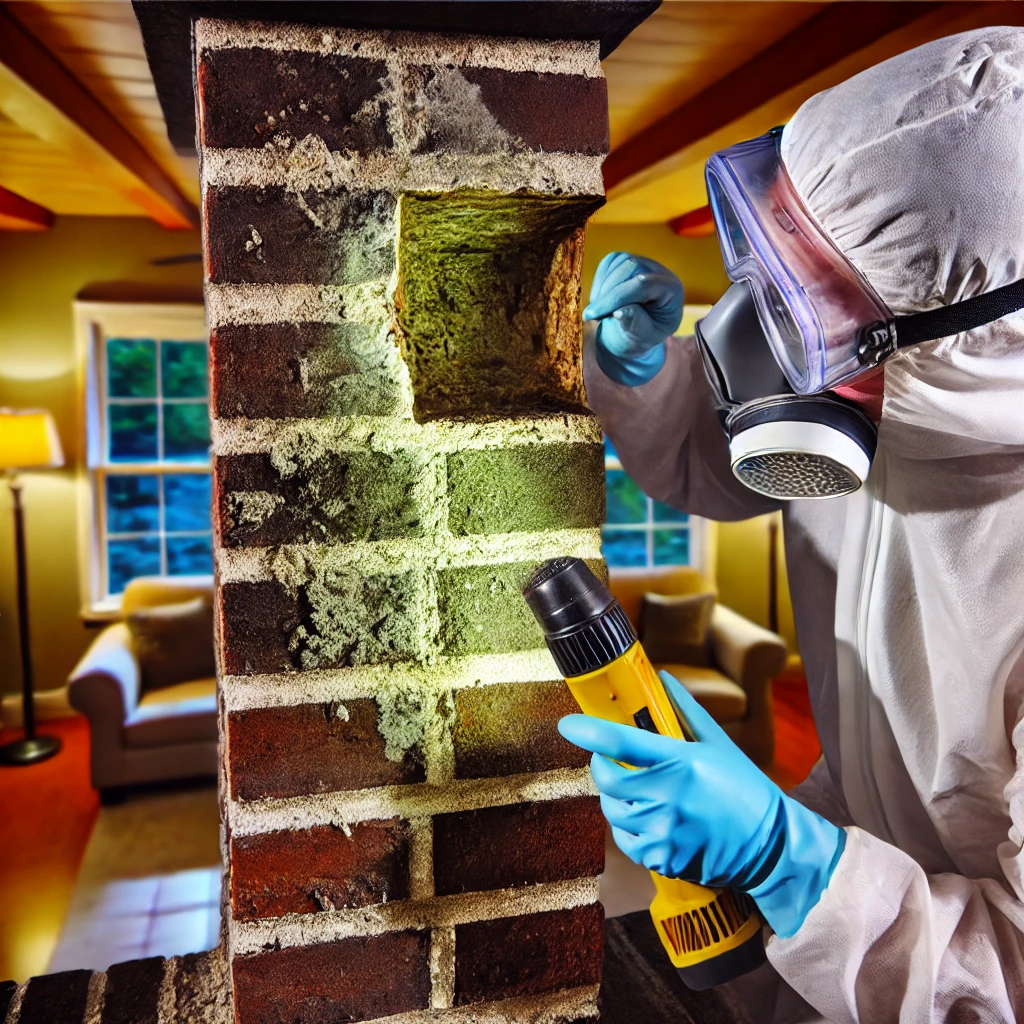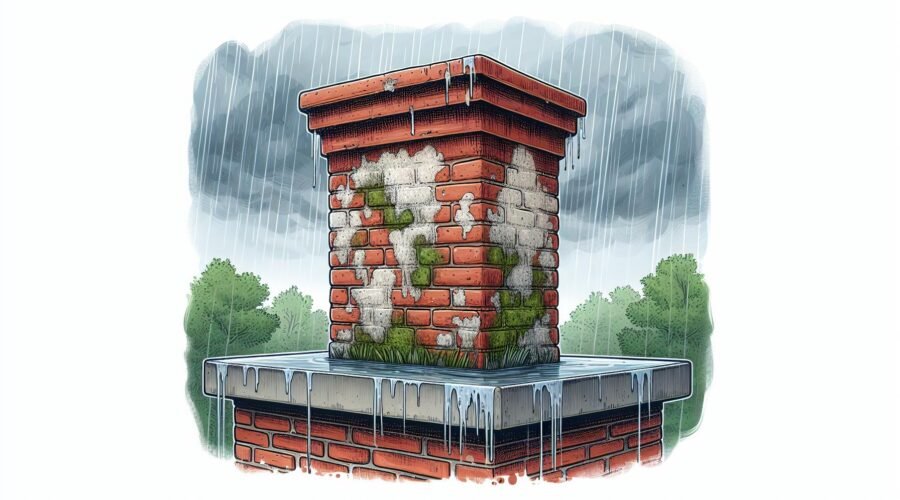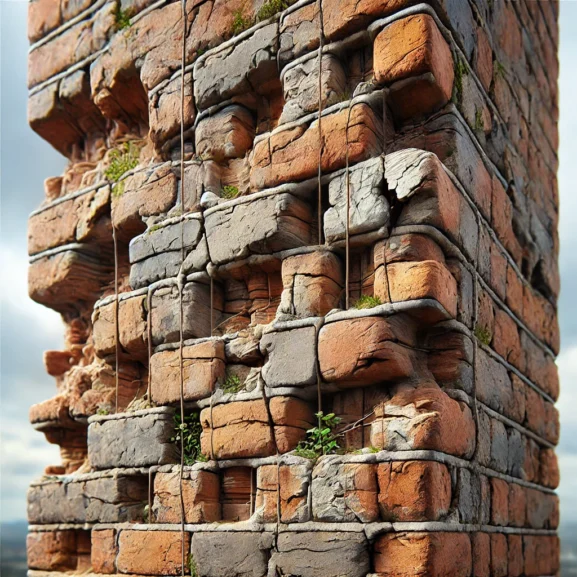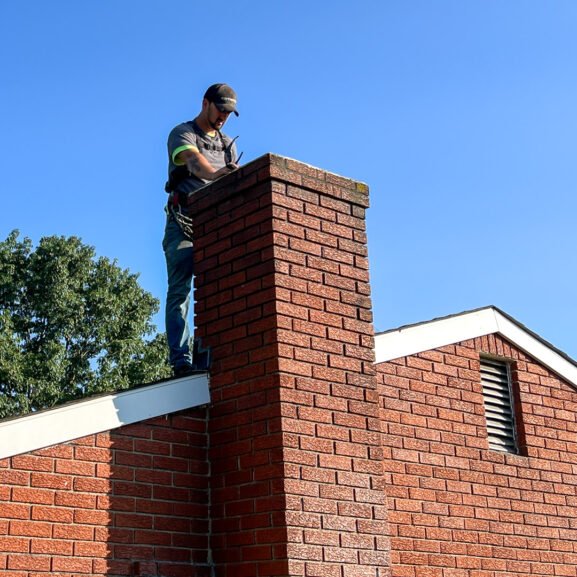Effective Solutions to Prevent Mold Growth in Damp Chimneys for a Safer Home
When we think of cozy firesides, the last thing on our minds is mold lurking in our chimneys. Yet, mold growth in damp chimneys is a common issue affecting our homes’ air quality and safety. Moisture can get into the masonry, making mold easy to grow. This turns our chimneys into hidden health risks.
Understanding how mold forms in these damp areas is important to keep our homes healthy. We’ll examine what causes mold in chimneys, the health risks, and ways to stop and remove it. Keeping our chimneys dry and well-maintained allows us to enjoy our firesides without worrying about mold.
A Complete Guide to Mold Growth and Prevention
Chimneys can become a breeding ground for mold if we let moisture build-up. Mold spores love damp places, especially when water damage and chimney dampness exist. Think of your chimney as a club for mold—only the damp can join. To keep mold away, it’s important to ensure chimneys stay dry.
- Chimney cleaning is important. It removes debris and reduces the risk of mold spores, which could end up in your family room when the TV is on. Regular cleaning helps keep your home safe and comfortable.
- Moisture Control Control moisture by using chimney caps and repairing any cracks. The less water, the less the jam for mold’s unwanted party.
- Professionals do Chimney Inspection, which is a monthly inspection to identify early signs of mold. Don’t let mold crash your chimney without permission.
- Ventilation Improve ventilation to clear out moisture quickly. Good airflow discourages mold, like a wind blowing away bad dance moves.
For more on mold and fire safety, visit the National Fire Protection Association. Trust your chimney to experts. Discover state-specific guidelines at the US Environmental Protection Agency.
Causes of Damp Chimneys
Damp chimneys often create perfect conditions for mold spores and fungal growth. Let’s explore why chimneys get wet and what to watch out for.
Weather Conditions
Weather conditions can impact chimney dampness. Rain and humidity often lead to moisture inside chimneys. Temperature changes also cause condensation. This can increase the risk of water damage. Snow and ice can make things worse when they melt. Chimney caps work like umbrellas, protecting your chimney from these elements. Keep them in good shape to reduce moisture buildup. To avoid problems, schedule regular chimney inspections. These checks help catch weather-related issues before they get worse.
Poor Ventilation
Poor ventilation makes chimney dampness problems worse. Without proper airflow, moisture stays trapped inside. This creates a wet environment where mold can grow. Excess humidity also makes it harder to stop mold in your home. Good air circulation helps dry out the chimney and reduces fungal growth. To improve airflow, experts suggest cleaning the chimney and adding vents. Flammable jokes are great at parties but not in chimneys. Reach out to professionals for consultation. Our team ensures your vents keep things safe and dry. Learn more about preventing moisture issues at the National Fire Protection Association.
Structural Issues
Structural issues can cause more dampness in your chimney. Water seeps into the masonry through cracks in the flue or chimney crown. Over time, the bricks absorb this water, making the problem worse. This is a bigger issue during the wet and chilly seasons. Fixing these problems quickly helps keep your chimney dry and safe. It’s best to hire professionals to handle any structural repairs. Trying to fix it yourself isn’t a good idea. Regular inspections help catch small problems, such as moldy issues before they become bigger. Additional insights on chimney maintenance are available at the Chimney Safety Institute of America.
Understanding these causes helps us protect against mold growth, ensuring safety and comfort.
Effects of Mold in Chimneys
Mold in chimneys isn’t just annoying. It can cause serious health and structural problems. Our goal is to keep you informed and engaged. Let’s dive into the moldy details together.
Health Concerns
Mold spores can easily enter our homes and affect air quality. These microscopic spores may trigger allergies, asthma, and other respiratory issues. Children, the elderly, and those with weakened immune systems are particularly vulnerable. If the mention of spores makes you “a-choo” just thinking about it, rest assured we’re here to help. For credible insights on mold safety, visit the Centers for Disease Control and Prevention (CDC).
Structural Damage
Mold grows in damp areas. Over time, it can cause serious damage to structures. In chimneys, mold can weaken the masonry. This can lead to cracks or even collapse. Moisture buildup worsens these issues. Water damage is a bigger concern than just spring cleaning. The frequent rain and changing temperatures worsen the problem. We suggest a full chimney inspection to catch and fix these issues. Check out the Chimney Safety Institute of America (CSIA) for chimney maintenance tips.
For those battling moldy foes, we’re ready to assist. Reach out to professionals for consultation.
Identifying Mold in Chimneys

Detecting mold in chimneys keeps our homes safe and our air clean. We focus on visual clues and odors to spot mold early. Mold prevention is easier with these identifying steps.
Visual Signs
Mold thrives in damp areas. It often appears as black, green, or white spots on bricks or the chimney liner. If you notice moisture near these spots, it could mean mold is growing. Look for signs of water damage, like cracks or discoloration on the chimney.
Regular chimney cleaning uncovers hidden mold spots. A thorough chimney inspection helps locate mold earlier, preventing mold spores from spreading. Remember, professional help is a better option than attempting DIY fixes.
Unusual Odors
It could be a sign of mold if you smell musty or earthy odors from your fireplace or chimney. These smells usually mean moisture in the chimney, which helps mold grow. The weather changes here can cause extra moisture to build up.
Chimney dampness often indicates mold growth inside. If strange odors persist, schedule a chimney inspection. We can detect issues and ensure effective moisture control.
Reach out to professionals for consultation, or visit the Chimney Safety Institute of America and the National Fire Protection Association for more information on chimney maintenance and fire safety.
Preventing Mold Growth
Keeping chimneys mold-free ensures better air quality and safety in our homes. Mold doesn’t stand a chance if we focus on these strategies.
Improving Ventilation
Improving chimney ventilation helps reduce mold spores and moisture buildup. Good airflow keeps the air dry and prevents mold growth. Make sure to check that chimney vents are clear and working properly. If local rules allow it, think about adding an exhaust fan. Proper ventilation reduces moisture and can prevent water damage in the long run. Poor airflow is a common problem because of changing weather. That’s why we need to stay on top of it. For more tips, check the Chimney Safety Institute of America.
Regular Maintenance
Consistent maintenance helps prevent mold. We recommend scheduling chimney inspections twice a year. This will help find hidden issues. Certified professionals will clean your chimney thoroughly. This stops mold spores from settling. Focus on moisture control with chimney caps and sealant repairs. Regular maintenance is like flossing for chimneys. It’s easy to skip, but avoiding bigger problems is crucial. Reach out to professionals for consultation and learn more from the National Fire Protection Association.
Professional Mold Remediation

When mold strikes, it’s not just a tiny issue. Addressing mold growth in chimneys is essential to protect health and the home. We rely on experts who handle mold remediation with precision and care.
Why Choose Professionals?
- Expertise: Professionals understand mold spores and ensure thorough removal.
- Safety: They use safe methods, protecting your home and health.
- Prevention: Experts check for issues like moisture buildup and damp chimneys, which helps prevent fungal growth from happening again.
- Inspection: A detailed chimney inspection identifies mold and water damage sources.
- Cleaning: Professionals perform comprehensive chimney cleaning to eliminate mold.
- Moisture control is key. We keep moisture in check in affected areas, which helps turn damp spaces into dry ones.
Our experts understand the unpredictable weather here. They know how to deal with chimney dampness caused by the weather. This helps prevent mold from coming back.
Remember, tackling mold through DIY is not funny! Reach out to professionals for consultation, and stay safe. Let’s leave mold remediation to the pros and enjoy a mold-free home together.
Visit the NFPA for fire safety tips and regulations and the Chimney Safety Institute of America for chimney safety.
Conclusion
Mold growth in chimneys is a serious issue for our homes and health. It’s important to understand what causes mold. Taking steps to prevent it can keep our chimneys dry. A dry chimney is a mold-free chimney. Regular maintenance and professional inspections are key. Timely repairs can stop moisture from building up and ensure a safe environment. Let’s prioritize chimney care and call for expert help when needed. You can find professional services to handle mold problems. These experts know how to deal with mold in the area. They are trained to safely remove it and prevent it from coming back. You can trust them to keep your home mold-free. Together, we can keep our chimneys safe and enjoyable for years.
Frequently Asked Questions
What causes mold growth in chimneys?
Mold grows in chimneys when moisture builds up in the masonry. Rain, humidity, and temperature changes can all contribute to this. Poor ventilation also helps create a damp space, which is perfect for mold. Structural problems, like cracks in the flue or chimney crown, let water in, making the issue worse.
How does mold in chimneys affect health?
Mold in chimneys can harm your health. It can cause allergies, asthma, and breathing problems, especially for children and the elderly. Mold spores can make existing health conditions worse and lead to long-term breathing issues.
What are the visual signs of mold in chimneys?
You may notice black, green, or white spots on your chimney. These are signs of mold. A musty odor can also mean there’s moisture. These are clear signs of mold. If you see these, it’s important to act fast. Mold can cause health problems and damage to your chimney.
How can I prevent mold growth in my chimney?
To prevent mold growth, control moisture. You can do this by using chimney caps, repairing quickly, and improving ventilation. Clean your chimney regularly and get a professional inspection twice a year. This helps spot problems early and stop mold from forming. Make sure your chimney vents are clear too. This reduces moisture buildup.
Why is professional mold remediation important?
Professional mold remediation is important. Experts conduct thorough inspections. They perform detailed cleaning. They also provide effective moisture control strategies. These professionals have the right expertise and safety measures. They use the proper equipment to fix mold issues. This helps prevent future mold growth. It also protects your health and property.
How often should I have my chimney inspected and cleaned?
We recommend having your chimney inspected and professionally cleaned at least twice a year. This will help keep it free of mold and other hazards. Regular maintenance helps you catch early signs of mold, ensuring both safety and the best performance from your fireplace.
What role does chimney maintenance play in mold prevention?
Chimney maintenance is important for preventing mold. It keeps the structure dry and well-ventilated. Regular inspections and cleaning help stop moisture from building up. Prompt repairs can catch mold early, reducing health risks and preventing damage to your home.
Why should residents be particularly vigilant about chimney mold?
We need to stay alert because of the area’s weather. It often rains, has high humidity, and experiences temperature changes. These conditions can cause moisture to build up in chimneys. It’s important to hire local professionals for regular inspections and maintenance. This helps prevent mold in our chimneys.


